The best potatoes for mashed potatoes are the ones that will give you a fluffy, creamy bowl of this perfect buttery side dish. I will tell you exactly which variety to use (and which to avoid) and some top tips to ensure that your mashed potatoes are the best. You’ll never want to make them any other way.
For fool-proof mashed potatoes, try my cream cheese mashed potatoes, yellow mashed potatoes, red skin mashed potatoes, or look at my ultimate guide to making mashed potatoes.
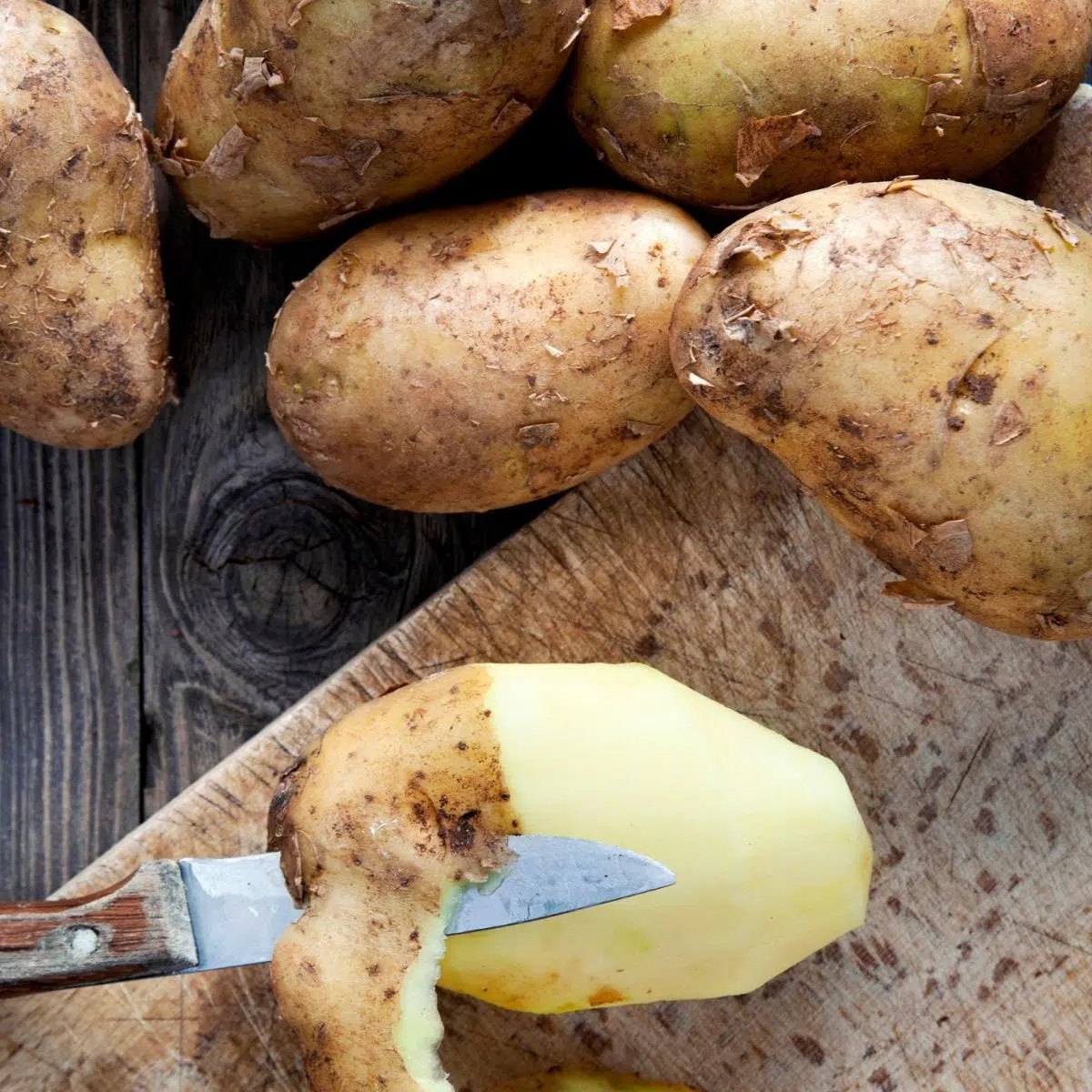
Every potato variety has its strengths and weaknesses. Some are best used for baking or grilling, others fry nicely, and some are perfect for mashing.
Understanding if you have waxy, starchy, or all-purpose potatoes can determine whether your mash will be a flavorful success. Also for see my potato guide for the best uses for starchy and waxy potatoes.
Waxy vs. Starchy Potatoes
Believe it or not, it matters which variety you choose for your homemade mashed potatoes at the grocery store. Potatoes typically fall into three main categories: starchy, waxy, and those in between.
Choosing a variety with a higher starch content is important to achieving fluffy and smooth mashed potatoes. They fall apart when cooked, making them easier to mash and giving you a light and extra fluffy outcome!
If you choose a waxy variety (such as white and red potatoes), you could have a pasty texture because these varieties are much firmer and require more effort to mash. No one wants gummy or gluey potatoes. Waxy potatoes are flavorful and much better for dishes such as potato salad because they tend to keep their shape during cooking.
If you ask any chef, home cook, or anyone who loves to whip up a delicious, buttery bowl of mashed potatoes what the best variety is, you’ll likely hear one of two options: Yukon gold or Russets. It’s a hot debate among potato connoisseurs, so I’m here to break down the differences.
Yukon Gold
Yukon golds are one of the most popular and recommended varieties to mash.
These will create a pleasant and creamy mashed potato with medium starch content. They won’t become gummy or pasty because they absorb less water, creating a better texture once mashed.
These potatoes are also known for being rich in flavor. They naturally taste buttery, giving you a richer-tasting potato before adding anything else. When you add butter or cream, you’ll end up with potatoes that are packed with flavor.
Russet
Russets are another extremely popular choice for mashed potatoes. They are a great versatile variety used for various dishes and cooking methods, whether baked, fried, or mashed.
*I grew up in the Pacific Northwest, so a great Idaho russet potato is still my #1 favorite.
They are very high in starch content and low in moisture. This combination will yield a pillow-soft, light-mashed potato! These will create a much fluffier mash, whereas the Yukons are creamier. Additionally, these potatoes also have a milder flavor than the Yukon golds.
>>>See All Of My Recipes Here!<<<
Potatoes To Avoid
Not all potatoes are great for mashing. Whether you add salt, pepper, rich butter, cream cheese, or any other high-quality ingredients, these won't get the job done.
You'll want to avoid any waxy varieties, such as fingerlings or red potatoes.
Tips For Making The Best Mashed Potatoes
Now you know the potato you choose is very important, but it doesn’t end there. Here are a few more tips to make the best bowl of creamy mashed potatoes!
1. Use A Blend Of Potatoes
Yes, I just told you all about the debate between Yukon Gold and Russets, which answers the question, ‘What are the best potatoes for mashed potatoes?’ And I will tell you that the answer is both of them!
When making this homemade side, use a 50/50 combination of Yukon gold and Russet potatoes to get the best of both worlds!
2. Choose The Correct Mashing Tool
There are various options for mashing potatoes; this truly makes a difference.
A potato masher can give you a chunkier, smashed potato result. A potato ricer will give you a smoother and creamier result.
However, do not use a food processor or blender; they will make your mashed potatoes gummy.
3. Use Good Quality Ingredients
Since this dish has minimal ingredients, it’s important that those ingredients are high-quality. To make it extra creamy and rich, you’ll want to choose half-and-half or cream instead of milk.
Also, choose unsalted butter (not a butter substitute) to control the saltiness. Butter is the prominent flavor in potatoes, so choose one of excellent quality.
4. Don’t Cut The Potatoes Too Small
When boiling your potatoes, you will want to keep them in bigger chunks. This will reduce the opportunity for water to be absorbed into the potato, causing it to lose flavor and become mushy and waterlogged.
5. Bring Milk And Fat To Room Temperature
Before mixing in your cream and butter, it is better to bring them to room temperature and scald the milk. You don’t want to mix cold milk into your hot potatoes because the potatoes also can’t absorb the milk or butter.
This can make the dish less flavorful or cause a sticky texture.
6. Don't Overwork The Potatoes
When mashing your potatoes or mixing in additional ingredients, make sure to handle them gently. If you stir or overwork them too much, they will become a gummy mess.
Now you know the best potatoes for mashed potatoes and a few tips and tricks to make this side dish the absolute best it can be. Check out my suggestions if you want to know what to serve with mashed potatoes. Go ahead and leave a comment below, and let me know your favorite tips and tricks!
Favorite Potato Recipes
Do you love a recipe you tried? Please leave a 5-star 🌟rating in the recipe card below and/or a review in the comments section further down the page.
Stay in touch with me through social media @ Pinterest, Facebook, Instagram, or Twitter! Subscribe to the newsletter today (no spam, I promise)! Don't forget to tag me when you try one of my recipes!
📖 Recipe Card
Best Potatoes For Mashed Potatoes: Recipes, Tips, & More!
Ingredients
- 2 lbs yellow potatoes (washed and quartered)
- 2 tablespoon salt (to taste)
- 1½ cups heavy cream
- ½ cup butter (cut into 1 tablespoon pats, use in 3 portions - 3 tablespoons, 3 tablespoons, and 2 tablespoons)
(Note: 2x or 3x only changes the ingredient list)
Instructions
- In a large pot, add in your quartered potatoes and cover them with 1 to 2 inches of cold water and then season generously with salt.
- Bring the water to a boil and cook the potatoes until they can easily be pierced with a fork, about 20-25 minutes. Once cooked, drain the potatoes.
- Add your heavy cream to a small saucepan and bring it to a boil (*see note).
- Meanwhile, while you are waiting for your cream to boil, press your potatoes through a potato ricer (*see note).
- Immediately add in ⅓ portion of the hot heavy cream and the first 3 tablespoons of butter and mix it into the potatoes. Repeat this process 2 more times with the remaining heavy cream, mixing until the butter is melted and everything is well incorporated.
- Taste your potatoes and add salt as needed. Top with freshly ground black pepper and serve immediately.
Notes
- Peeling your potatoes is optional, but they are much easier to run through your ricer if peeled.
- Use 1 tablespoon of salt in your water per each 1 pound of potatoes being boiled for any mashed potatoes recipe to add flavor.
- For more information on how to quickly scald your cream, check out my post about scalding milk for mashed potatoes!
- Never put potatoes into a food processor or blender, as it is too rough and will make your mashed potatoes gluey and gummy.
- To store: Once completely cool, keep your potatoes in a sealed container in the fridge for up to 4 days.
- To freeze: Freeze your potatoes in single-size portions for up to 2 months. Check out my guide on freezing mashed potatoes.
- To reheat: Reheat your mashed potatoes on the stovetop over low heat. For more tips and tricks, take a look at my article on the best methods for reheating mashed potatoes.

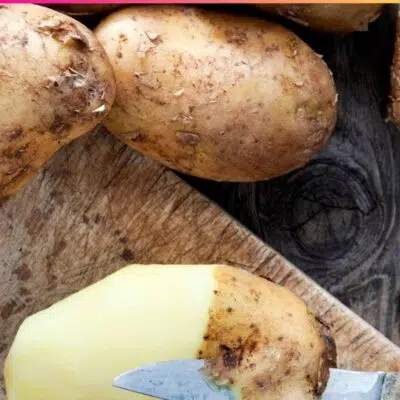
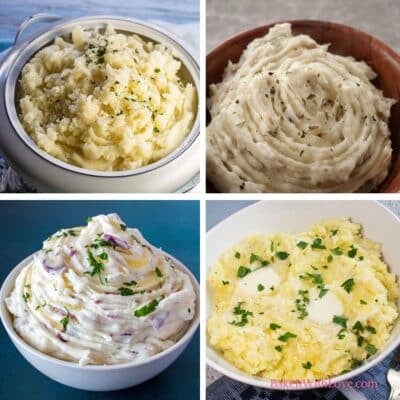
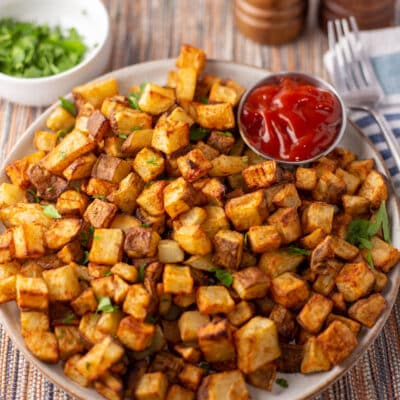
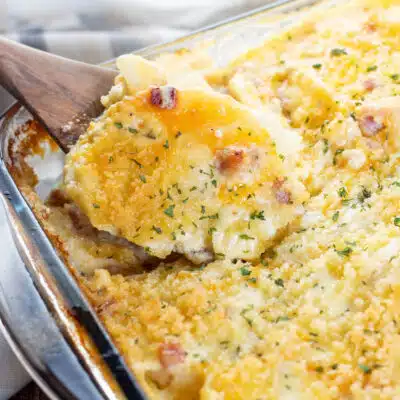
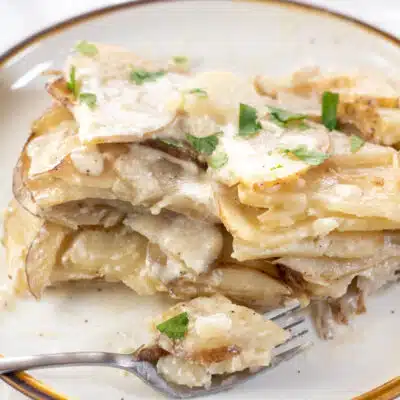
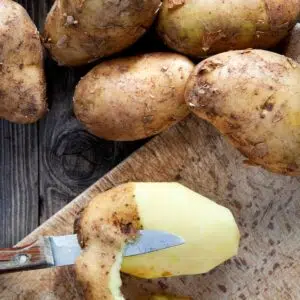
Comments
No Comments